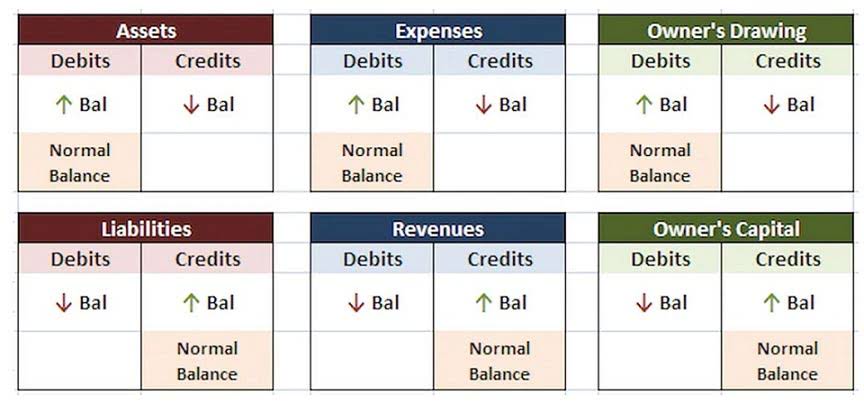
Another important metric of working capital management is the inventory turnover ratio. To operate with maximum efficiency, a company must keep sufficient inventory on hand to meet customers’ needs. However, the company also needs to strive to minimize costs and risk while avoiding unnecessary inventory stockpiles.
- Even a profitable business can face bankruptcy if it lacks the cash to pay its bills.
- For working capital or other assets, you add the prior period and subtract the current period, and for working capital and other liabilities, you add the current period and subtract the prior period.
- It represents the difference between current assets and current liabilities.
- For example, imagine the appliance retailer ordered too much inventory – its cash will be tied up and unavailable for spending on other things (such as fixed assets and salaries).
- The cash flow from operating activities section aims to identify the cash impact of all assets and liabilities tied to operations, not solely current assets and liabilities.
- Working capital could be temporarily negative if the company had a large cash outlay as a result of a large purchase of products and services from its vendors.
Operating Working Capital Formula (OWC)
The better a company manages its working capital, the less it needs to borrow. Even companies with cash surpluses need to manage working capital to ensure that those surpluses are invested in ways that will generate suitable returns for investors. Finally, the Change in Working as calculated manually on the Balance Sheet will rarely, if ever, match the figure reported by the company on its Cash Flow Statement.
- The inventory turnover ratio is calculated as the cost of goods sold (COGS) divided by the average balance in inventory.
- In addition to the ratios discussed above, companies may rely on the working capital cycle when managing working capital.
- On the positive side, this represents a short-term loan from a supplier meaning the company can hold onto cash even though they have received a good.
- In financial accounting, working capital is a specific subset of balance sheet items and is calculated by subtracting current liabilities from current assets.
- Understanding changes in cash flow is also important if you are applying for a small business loan.
- Finally, the Change in Working as calculated manually on the Balance Sheet will rarely, if ever, match the figure reported by the company on its Cash Flow Statement.
Balance Sheet

For example, a service company that doesn’t carry inventory will simply not factor inventory into its working capital calculation. The net working capital (NWC) metric is different from the traditional working capital metric because non-operating current assets and current liabilities are excluded from the calculation. The cash flow from operating activities section aims to identify the cash impact of all assets and liabilities tied to operations, not solely current assets and liabilities. The balance sheet organizes assets and liabilities in order of liquidity (i.e. current vs long-term), making it easy to identify and calculate working capital (current assets less current liabilities). The formula to calculate the working capital ratio divides a company’s current assets by its current liabilities. In financial accounting, working capital is a specific subset of balance sheet items and is calculated by subtracting current liabilities from current assets.
How to Reconcile Change in NWC on Cash Flow Statement
The amount of working capital needed varies by industry, company size, and risk profile. Industries with longer production cycles require higher working capital due to slower inventory turnover. Alternatively, bigger retail companies interacting with numerous customers daily, can generate short-term funds quickly and often need lower working capital. In our example, if the retailer purchased the inventory on credit with 30-day terms, it had to put up the cash 33 days before it was collected. Here, the cash conversion cycle is 33 days, which is pretty straightforward. For example, if it takes an appliance retailer 35 days on average to sell inventory and another 28 days on average to collect the cash post-sale, the operating cycle is 63 days.
Cash Flow Statement
A positive NOWC indicates that a company has sufficient current assets to cover its short-term obligations, while a negative NOWC suggests potential liquidity issues. Yes, working capital can be zero if a company’s current change in operating working capital assets match its current liabilities. While this doesn’t always indicate financial health, businesses should manage their working capital carefully to have adequate liquidity and meet short-term obligations.
Some current assets include cash, accounts receivable (AR), inventory, and short-term investments. Current liabilities are any obligations due within the following 12 months. These include accruals for operating expenses and current portions of long-term debt payments. Working capital is the difference between a company’s current assets and current liabilities.

- We will also demonstrate some examples to help you understand the calculation.
- Some CEOs frequently see borrowing and raising equity as the only way to boost cash flow.
- Working capital is a basic accounting formula (current assets minus current liabilities) business owners use to determine their short-term financial health.
- If the Change in Working Capital is negative, the company must spend in advance of its revenue growth – like a retailer ordering Inventory before it can sell and deliver its products.
- Working capital also gets trapped when customers do not pay their invoices on time or suppliers get paid too quickly or not fast enough.
- In our example, if the retailer purchased the inventory on credit with 30-day terms, it had to put up the cash 33 days before it was collected.
Since the growth in operating liabilities is outpacing the growth in operating assets, we’d reasonably expect the change in NWC to be positive. The company’s cash flow will increase not because of Working Capital, but because the company earns profits on the sale of these products. We can see in the chart below that Coca-Cola’s working capital, as shown by the current ratio, has improved steadily over a few years.
Current Assets
Learn financial statement modeling, DCF, M&A, LBO, Comps and Excel shortcuts. Upon netting those two values against each other, the operating working capital of our hypothetical https://www.bookstime.com/ company is $40 million. By calculating the sum of each side, the following values represent the two inputs required in the operating working capital formula.
